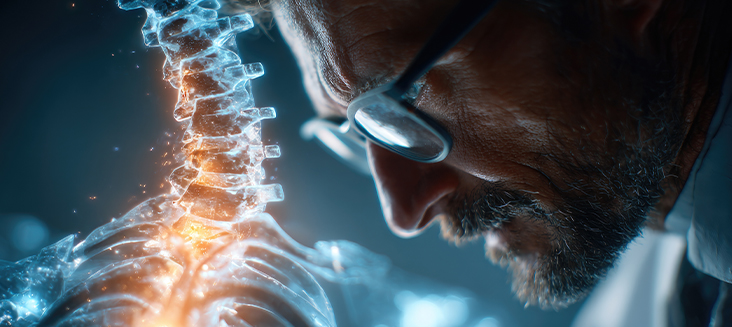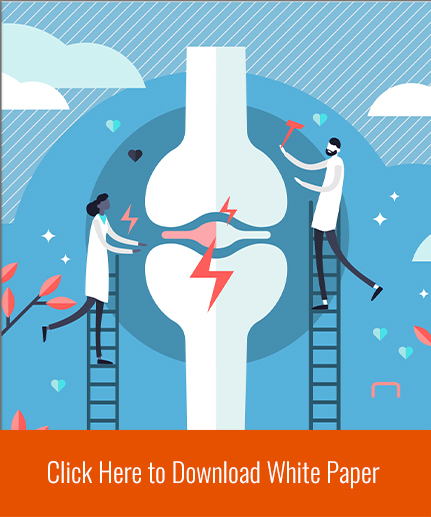Free Case Evaluation

CRPS Prognosis and Life Expectancy Lawyers
Understanding the long term consequences of a CRPS diagnosis
For many people, coping with CRPS is unbearable. Patients only want the pain to go away. Any type of movement can be very painful. Even sitting still can be traumatic. The pain can make it difficult or impossible to earn a living. One day can be devastating; the next day can be better, but far from perfect. Just getting a proper diagnosis can take a substantial amount of time.
Everyone’s prognosis is different. While the pain becomes manageable for many people, others live with severe chronic pain for their entire lifetime. There are many different treatments to help manage the physical pain and the mental health challenges. Our CRPS lawyers are ready to help you obtain the compensation you deserve from those responsible for all your financial needs and personal pain. The CRPS Law Firm will fight for all the compensation you deserve.
Free Case Evaluation
What is CRPS?
Complex Regional Pain Syndrome (CRPS) is a difficult medical condition to diagnose and treat. The general explanation, from various sources, is that CRPS is a malfunction or overreaction of a person’s central nervous system to certain types of physical trauma. Basically, the central nervous system is unable to turn off pain signals even after the original injury is treated. Inflammation and immune system dysregulations may contribute to CRPS. The main symptom is pain in a person’s arms, legs, hands, or feet. Additional symptoms include swelling, reduced mobility, atrophy of the muscles, stiffness of the joints, sensitivity to touch, and changes to a person’s skin temperature, color, and texture.
CRPS can lessen or go into remission over time. However, some CRPS patients have chronic, incapacitating pain that affects the patient’s ability to function, work, enjoy their life and their family, and their mental health. CRPS is rare. Some studies estimate an incidence of about 5–26 per 100,000 people per year. CRPS occurs at any age; peak onset is around 40–70 and it is more common in women. Some studies report a higher proportion among people of European ancestry. Women are three times more likely to suffer from CRPS than men. CRPS affects the upper limbs more than the lower limbs. Some types of physical trauma, such as injuries from a car accident, may start the development of CRPS.
CRPS patients often report that the condition is more painful than amputation, giving birth, broken bones, and fibromyalgia. Although uncommon, CRPS can spread to other parts of the body.
What is the prognosis for people with CRPS?
According to Burning Nights, a British CRPS resource, every person’s CRPS prognosis is different. Delays in obtaining a proper prognosis can prolong a person’s suffering and the length of time a person has to cope with CRPS.
Generally, the doctors who can help determine a CRPS patient’s prognosis are neurologists, dermatologists, surgeons, anesthesiologists, pain management doctors and certified CRPS specialists
While not fatal, CRPS is associated with higher rates of anxiety and depression, and suicidality can occur in the context of severe chronic pain.
According to the Cleveland Clinic, the peak onset age for developing CRPS is 40. About 200,000 people in the U.S. suffer from CRPS each year. Symptoms normally start 4 to 6 weeks after an injury or surgery. The main goals of CRPS treatment are to relieve a victim’s pain and restore their ability to use their affected limb.
The Cleveland Clinic states that CRPS:
Can greatly affect your quality of life. The good news is that there are many treatment options and many combinations of options that you can try. The earlier you receive a CRPS diagnosis and start treatment, the better the chance that your symptoms will respond to treatment.
Johns Hopkins Medicine states that:
Physical therapy and exercise that keep the painful limb or body part moving can often improve blood flow and ease symptoms. It can also help improve the affected limb’s flexibility, strength, and function. If needed, occupational therapy can help you learn new ways to work and do daily tasks.
The physical treatments for CRPS are only a part of the battle. Many CRPS victims (and family members) suffer emotionally and psychologically. Victims may suffer from anxiety, depression, and posttraumatic stress disorder. The challenges can compound each other. The physical pain can cause emotional trauma. The emotional trauma can then prevent CRPS patients from getting the physical therapy they need.
Possible complications of CRPS include atrophy (a deterioration of the skin, muscles, and bones) and contracture (tightening of the muscles of the hand and fingers or the foot and toes).
Are there treatments for CRPS?
According to Stanford Health, the treatment for CRPS often involves many different types of healthcare providers. Possible treatments include:
- Medications that may help include:
- Anti-inflammatory drugs, including steroids
- Bisphosphonates, “medicines that may reduce inflammation and help heal bones”
- Medications, such as anti-neuropathic drugs, are used to treat nerve-related pain by helping to decrease pain signals.
- Medications that lower the sympathetic nerve system response
- IV ketamine may provide short-term pain relief in some CRPS patients; response and duration vary, and evidence for durable relief remains limited.
- Surgeries and other procedures. These include:
- Sympathetic Nerve Blocks. These are injections that “calm the nerves (fight-or-flight system) that contribute to pain.”
- Nerve blocks. “Nerve blocks involve injection of local anesthetic “numbing” medications that last 6-8 hours and can help diagnose a nerve issue contributing to CRPS.”
- Peripheral nerve stimulators or nerve surgery. Peripheral nerve stimulators (PNS) may help to “override” signals from overactive nerves.
- Spinal Cord Stimulation. This procedure places a device near a patient’s spine, which sends electrical signals to reduce pain.
- Rehabilitative therapy.
- Physical and occupational therapy. These therapies include movement exercises, mirror-therapy, and “graded motor imagery” to help a patient regain functional use of their CRPS limb.
- Hand therapy: This therapy helps people with pain in their hands or arms.
- Psychological therapy. Many CRPS patients benefit from psychiatric and psychological therapy to cope with their anxiety and stress.
According to the U.S. National Institutes of Health, there is a lot of new and continuing research being done to help people living with CRPS. For example, scientists are studying which children and adolescents are able to cope better in the hope of understanding how to help adults with CRPS.
Can support groups help?
Yes. Coping with your physical and emotional pain will be difficult. Just explaining your condition to the people you know can be challenging. Fortunately, there are many CRPS support groups. The people who run and participate in these support groups understand what you’re going through because they’ve experienced or are still experiencing the same type of trauma. It does help to share experiences and feelings.
CRPS support groups include online conversations, newsletters, and suggestions for handling common CRPS questions and concerns.
A few of the support groups to consider include:
- Reflex Sympathetic Dystrophy Syndrome Association (RSDSA). This national support group can help you find local support groups.
- The Burning Limb Foundation helps “individuals with CRPS, their families and caregivers to find their voice so that they won’t have to fight the CRPS battle alone.”
- The CRPS Forum provides education, supports research, and raises awareness of CRPS.

Get help by calling our CRPS Law Firm today
At the CRPS Law Firm, we’ve been fighting for CRPS Warriors for several decades. Our CRPS Law Firm will help you obtain a proper diagnosis and understand your treatment options. We have working relationships with liability and medical professionals to hold the people or businesses liable for your CRPS condition accountable for all your financial damages and personal suffering.
Please call us or fill out our contact form to schedule a free consultation. We have the experience and resources to provide strong CRPS representation.

